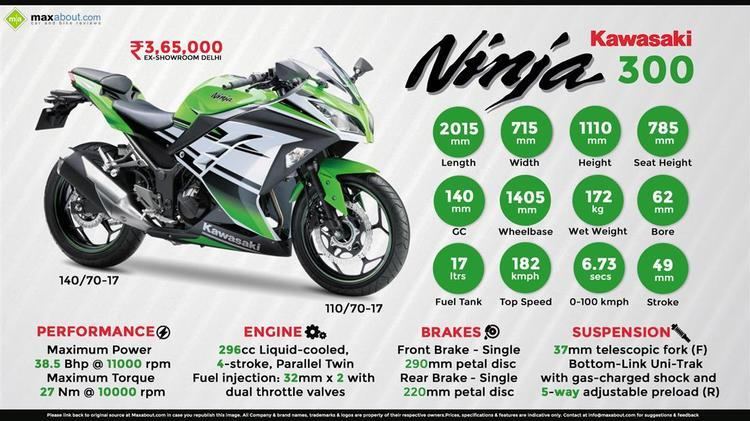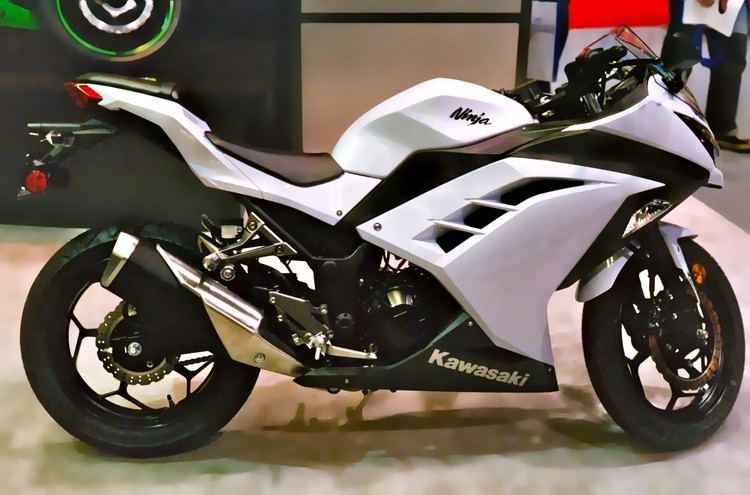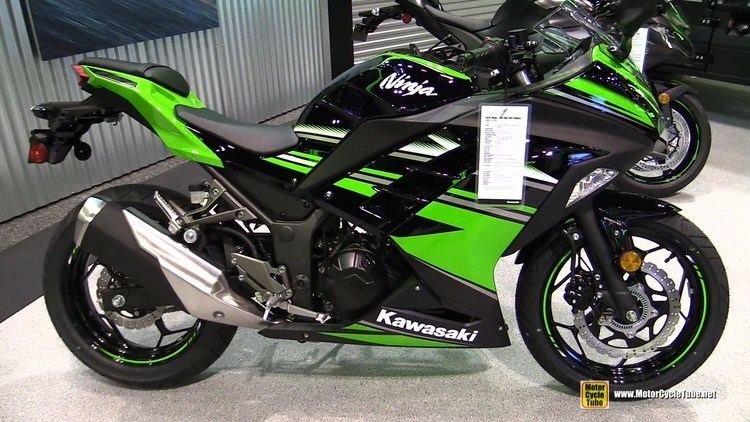Also called EX300 | Production 2012-present | |
 | ||
Engine 296 cc (18.1 cu in) liquid-cooled 4-stroke 8-valve DOHC parallel-twin | ||
2015 kawasaki ninja 300 motorcycle review
The Kawasaki Ninja 300, or EX300, is a 296 cc (18.1 cu in) Ninja series sport bike introduced by Kawasaki in 2012 for the 2013 model year. It is sold in Europe, North America, Australia and elsewhere. In some markets, the Ninja 300 replaced the Ninja 250R, while in others the two were sold alongside each other, or only the 250R was available.
Contents
- 2015 kawasaki ninja 300 motorcycle review
- 2014 kawasaki ninja 300 he just bought a motorcycle a beginner s bike
- Performance
- References

2014 kawasaki ninja 300 he just bought a motorcycle a beginner s bike
Performance

The Ninja 300 has a 296 cc (18.1 cu in) straight-twin engine. Dynamometer tests showed that the Ninja 300 produces more power than the 250—34.77 to 34.95 hp (25.93 to 26.06 kW) compared with 25.48 hp (19.00 kW)—and higher torque across the rev range at 17.45 to 18 lb·ft (23.66 to 24.40 N·m).

Its top speed has been recorded at 180.9 km/h (112.4 mph) and acceleration at 5.6 to 6.41 seconds from 0 to 97 km/h (0 to 60 mph), and around 14.5 seconds at 141.14 to 145.77 km/h (87.7 to 90.58 mph) in the quarter mile.

Stopping distance from 97 to 0 km/h (60 to 0 mph) in the ABS model was 38.0 to 41.1 m (124.6 to 135 ft). ABS is optional.

Fuel economy was measured at around 70 mpg‑US (3.4 L/100 km; 84 mpg‑imp), while other sources reported it at 54.1 mpg‑US (4.35 L/100 km; 65.0 mpg‑imp), though regardless of the methodology, the 300 showed improved gas mileage over the Ninja 250R.

By comparison with the 250R, the Ninja 300 also has a slightly smaller 17-litre (3.7 imp gal; 4.5 US gal) fuel tank, taller gearing, and a back-torque-limiting slipper clutch with an assist mechanism that decreases clutch lever effort.
